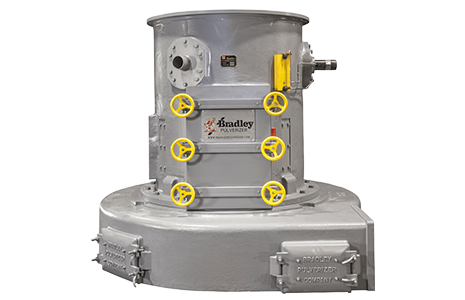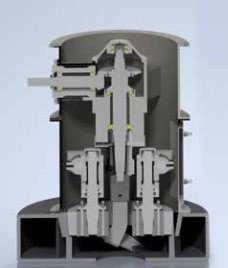Ideal for Pilot Testing, R&D Projects, and Low Tonnage Production

Bradley Airswept Mills combine the fine grinding action of a pendulum roller mill with air stream classifying and fluid bed drying capabilities to produce precisely sized particles for a variety of applications.

Performance Features
- Equipped with 2 pendulum rollers
- Low output of 150-850 kg/hr ton per hour
- Product fineness from 50% passing 150 microns to 99.9% passing 30 microns
- Ideal for pilot testing & development projects
- Custom options available
Specifications
| Model | Mill Motor Size | Fan Motor Size | Max Feed Size |
|---|---|---|---|
| BM00 | 15 kW | 15 kW | 10mm |
| DIMENSIONS (MILL ONLY): 995m wide x 1100mm high | |||
Contact Us to discuss your low tonnage milling project
Featured Resources
- Video: Pendulum Airswept Roller Mill
- Video: Airswept Mill Systems
- Case Study: Bradley Mill Overhaul and VBC Upgrade
- Article: The Importance of Phosphate Milling
- Article: Mill Optimizations for Low Grade Phosphate
- Brochure: BM00 Airswept Pendulum Mill
- Brochure: Airswept Roller Mills
- Top Considerations When Selecting a Milling and Classification System
- A Comparison of Mills Used for Phosphate Rock Grinding
- Unique Design Advantages of Bradley Air Swept Roller Mills
- Performance Advantages of Bradley Mills
- Which Airswept Mill is Right for Me: Single-Pass or Recycled System?
- Mills for Phosphoric Acid Manufacturing
